

设计单位 hia高地设计
项目地点 广东清远
建成时间 2023年6月
建筑面积 6,091平方米
本文文字由设计单位提供。
三禾·稻里温泉度假酒店坐落于“温泉之乡”三坑镇安庆三和村。随着经济发展和时代变迁,村民们陆续外出务工、经商或外迁。房空人荒,村里的老房子长期闲置、村集体建设用地缺乏管护,原本喧闹的村庄日渐凋敝荒芜。如何将沉寂已久的老村庄重新激活,并带入新的活力与人气,成为本次项目需要面临的较大挑战。
Sanhe·Daoli Hot Springs Resort is located in Sanhe Village, Anqing, within the celebrated "Hometown of Hot Springs," Sankeng Town. Over the years, economic progress and societal changes have led many villagers to seek opportunities elsewhere, leaving homes vacant and the village infrastructure neglected. The old houses have remained unoccupied for extended periods, and communal land has suffered from a lack of proper management. Consequently, the once vibrant village has gradually declined. The primary challenge of this project is to rejuvenate the village, infusing it with new vitality and energy. Our goal is to transform Sanhe Village into a thriving, enchanting destination, revitalizing its historical charm while incorporating contemporary comforts.

hia高地设计收到了三禾稻里团队的邀请,作为这次旧村改造的设计担纲。经历了接近三年的更新建设,沉睡已久的古村终于开启了新的篇章。
Hia has been invited by the Sanhe Daoli team to lead this village revitalization project. After nearly three years of dedicated effort, the long-dormant ancient village is now embarking on a new chapter of rebirth and renewal.

旨在让乡土记忆与现代文旅体验产生更丰富的融合,设计师与业主共同描绘了一个以乡村温泉度假为核心的全方位民宿酒店的愿景。设计上,设计团队将传统建筑元素与现代美学相结合,营造出与自然和谐共生的环境。功能上,村庄民宿提供了多样化的住宿选择、特色餐饮、丰富的田间娱乐活动和特色文化体验,让住客在享受天然温泉的同时,沉浸在清远本地独特的文化氛围中,实现传统与现代的和谐交融。
Our aim is to create a seamless fusion of rural heritage and sophisticated leisure experiences. Together with the owners, we have envisioned a comprehensive village hot springs retreat that centers on an immersive rural escape. Our design merges traditional architectural elements with contemporary aesthetics, crafting an environment that exists in perfect harmony with nature.The village accommodations provide a range of luxurious lodging options, gourmet dining experiences, diverse agrarian activities, and bespoke cultural encounters. Guests can indulge in the natural hot springs while being enveloped in the unique cultural atmosphere of Qingyuan, achieving a harmonious synthesis of tradition and modern elegance.
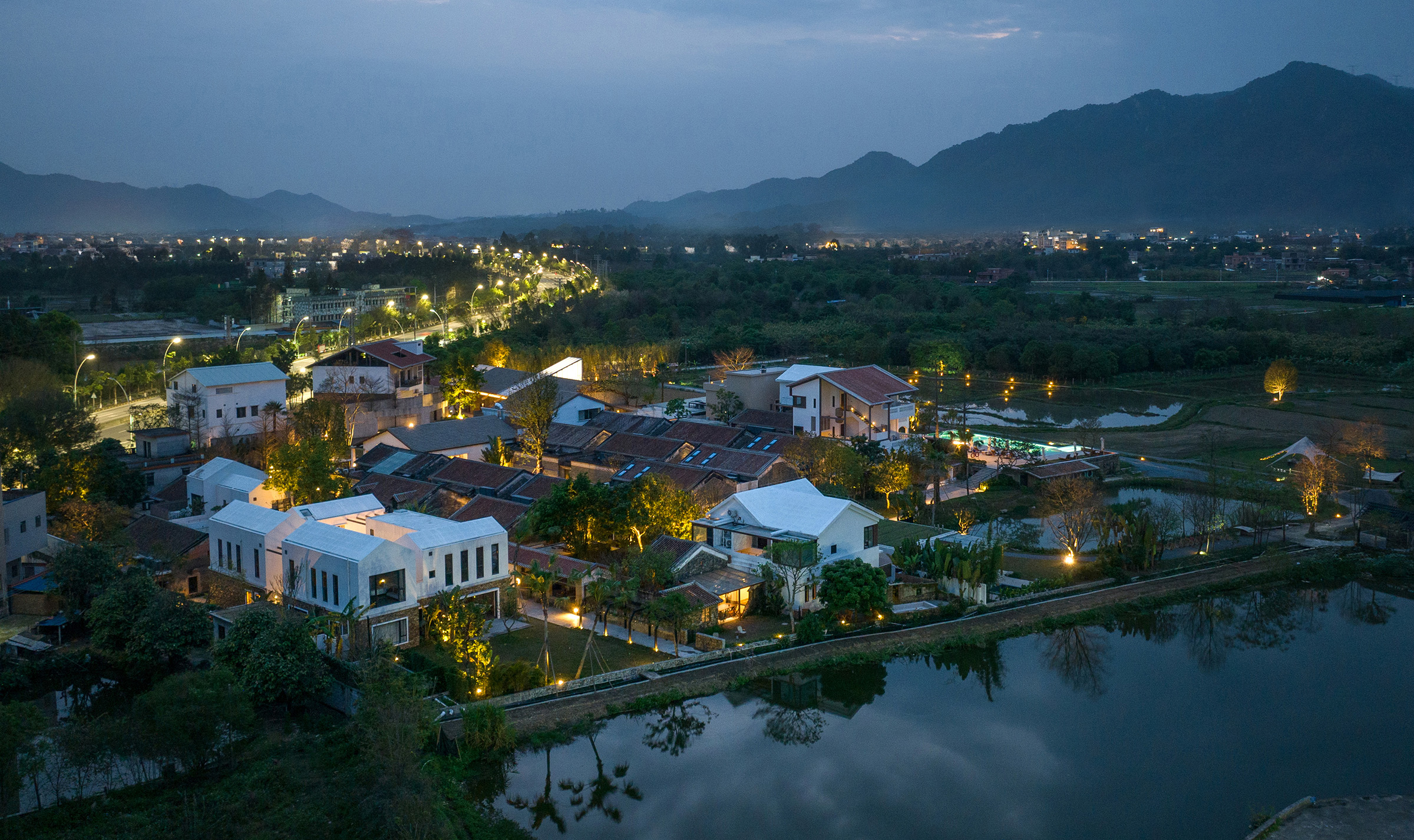
这里本是原址村落年久失修的谷仓,改造后的建筑在保留了部分原有历史风貌的同时,增加了更丰富的室内空间,成为了酒店的标志建筑。
Originally, this site was home to an old, dilapidated village granary. The renovation preserved elements of its historical charm while significantly enhancing the interior spaces. It has now become an iconic structure of the hotel.

设计师保留了原有残墙和肌理,并在旧墙背后新筑起一组混凝土墙。坚实有力的墙体辅助支撑旧墙,同时也撑起了室内的挑高空间,让室内游刃有余地创造了包含半地下室的三层图书馆空间。新浇筑混凝土墙面有良好的承载能力,撑起了大跨度的屋面,使得屋顶下的空间相较于传统农村房屋,有了更开阔且自由的室内呈现。
The designers preserved the original remnants and textures of the old walls, while constructing a new set of robust concrete walls behind them. These sturdy new walls provide additional support to the old structure and create lofty indoor spaces. This allowed for the effortless creation of a three-story library, including a semi-basement. The newly poured concrete walls offer excellent structural support, enabling a wide-span roof. As a result, the space beneath the roof is significantly more open and flexible compared to traditional rural houses.

书院氛围和田园美学的交融,让新生的建筑变成了一个文化的容器。
The integration of a scholarly atmosphere and pastoral aesthetics transforms the newly revitalized building into a cultural vessel.


水景中庭
这里原是村里的活动操场,村民们会在这里举办活动和运动康健,农忙时也把这里当成了家家户户的晒谷场。不大的场地承载了村里重大节日的举办,也是村集体记忆的映射。设计团队希望保留这个区域的场所感,因而创造了一片镜面水面和小径。
This area was originally the village playground, where villagers held events, engaged in sports, and used the space as a communal drying yard during busy harvesting seasons. The modest grounds hosted major village festivals and reflected the collective memory of the community. The design team aimed to preserve the sense of place in this area by creating a reflective water surface and pathways.


行走于水中的“长桥”,可以看到场边建筑的涟漪倒影,也可以更清晰地看到新旧建筑和肌理的交融,以及同一片天空下依旧在变幻的四时光影与景色。
Walking along the "long bridge" over the water, one can see the rippling reflections of the surrounding buildings and clearly observe the blending of old and new textures, as well as the ever-changing play of light and shadows under the same sky throughout the seasons.

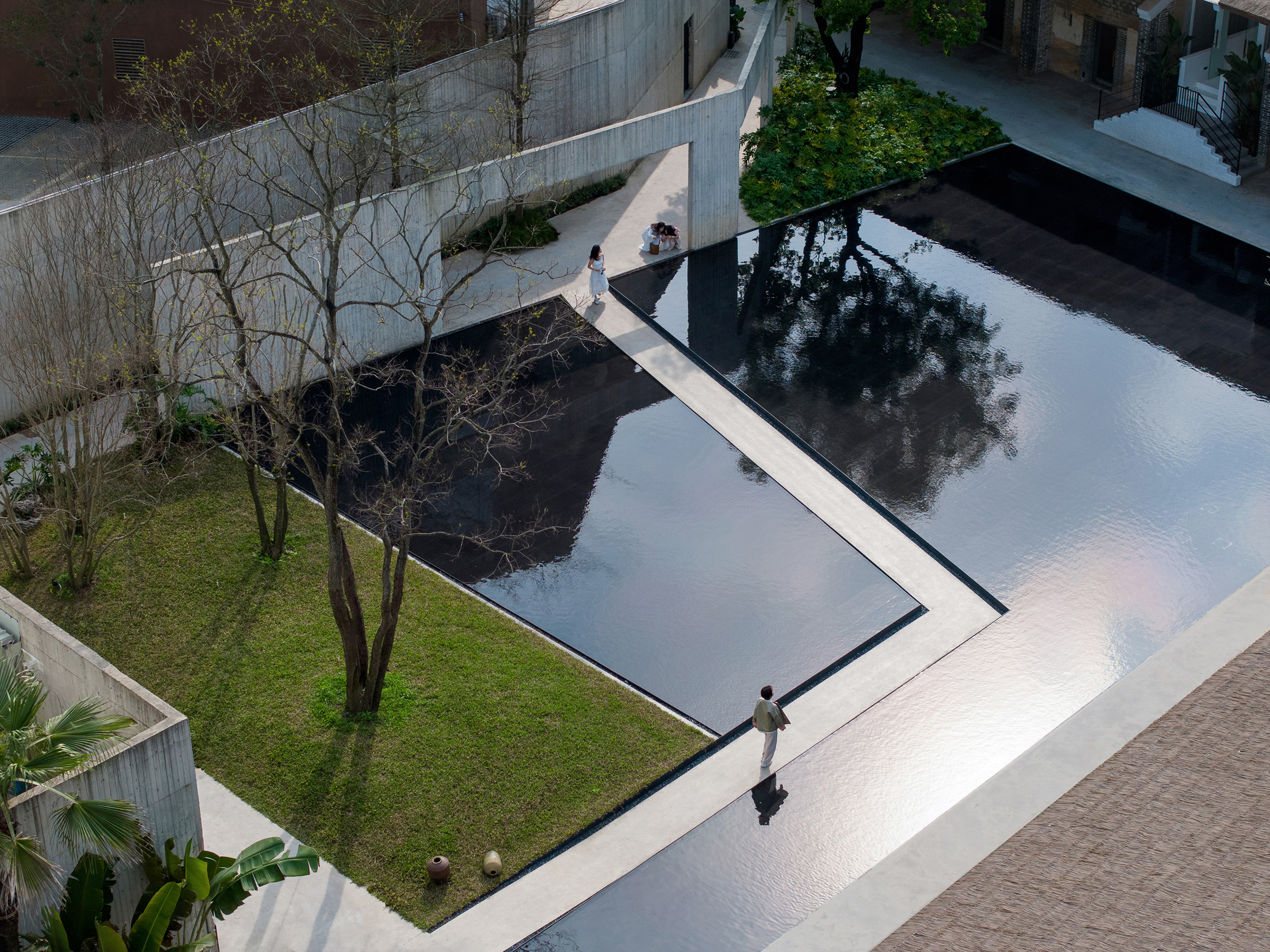
在场地与酒店外围的国道之间,设计团队建造了两道混凝土墙作为空间界定,它们既起到了部分消音效果,又丰富了视觉场景的层次。当客人们穿过了前台图书馆,步入而至水景中庭时,由于得到四面建筑和混凝土景观墙的部分消音保护,即使紧邻国道,也能得到更宁静的探索体验。中庭水面的映射增加了景观的深度,呈现出了和谐的秩序感。
We constructed two concrete walls between the site and the national highway next to the hotel to define the space. These walls not only provide partial sound insulation but also enrich the visual layers of the landscape. As guests pass through the lobby library and enter the water courtyard, they experience a quieter environment thanks to the sound-dampening effect of the surrounding buildings and concrete landscape walls, despite the proximity to the highway. The reflective water surface in the courtyard further enhances the depth of the landscape, creating a harmonious sense of order.


公共餐厅
餐厅设在了酒店最为开阔的位置,这里面向着大片稻田。设计师利用这一景观引入“餐厅与自然共生”的理念,运用大景观窗和可灵活调整的门,模糊了室内外的界限,使得自然光线和景观成为餐厅设计的一部分,以更贴近的方式感受四季分明的生态变化。
The restaurant is situated in the most expansive part of the hotel, overlooking vast rice fields. Embracing the concept of "coexistence with nature," the design incorporates large panoramic windows and flexible doors to blur the boundaries between indoor and outdoor spaces. This seamless integration allows natural light and the surrounding landscape to become integral to the dining experience, enabling guests to intimately connect with the seasonal rhythms and ecological changes of the environment.


在室内设计上,设计师注重材料的选择和细节的处理,使用自然材料如木材和石材,以及温暖的色调,营造出温馨舒适的用餐环境。同时,通过精心设计的照明和家具布局,增强空间的功能性和美学价值。
The interior design emphasizes meticulous material selection and details. Natural materials like wood and stone, paired with warm hues, create a cozy and inviting dining atmosphere. Thoughtfully designed lighting and furniture arrangements enhance both functionality and aesthetic appeal.



目前酒店共设有42间套房。设计体现对老建筑的延续,设计师以其对场地的理解为基础,在尊重和维护既有建筑的前提下,创造光线充足且面向景观的内部空间。套房在不同的房间和楼层之间,相互呼应与连接,共同构成一段连贯的“旅程”,并各自呈现出其独有的风格特征。
The hotel currently features 42 suites, designed to honor the essence of the original village structures. Grounded in a deep appreciation of the site, the design creates bright, landscape-facing interiors while preserving the existing architecture. Each suite offers a cohesive "journey" through its various floors and rooms, each showcasing unique stylistic characteristics.







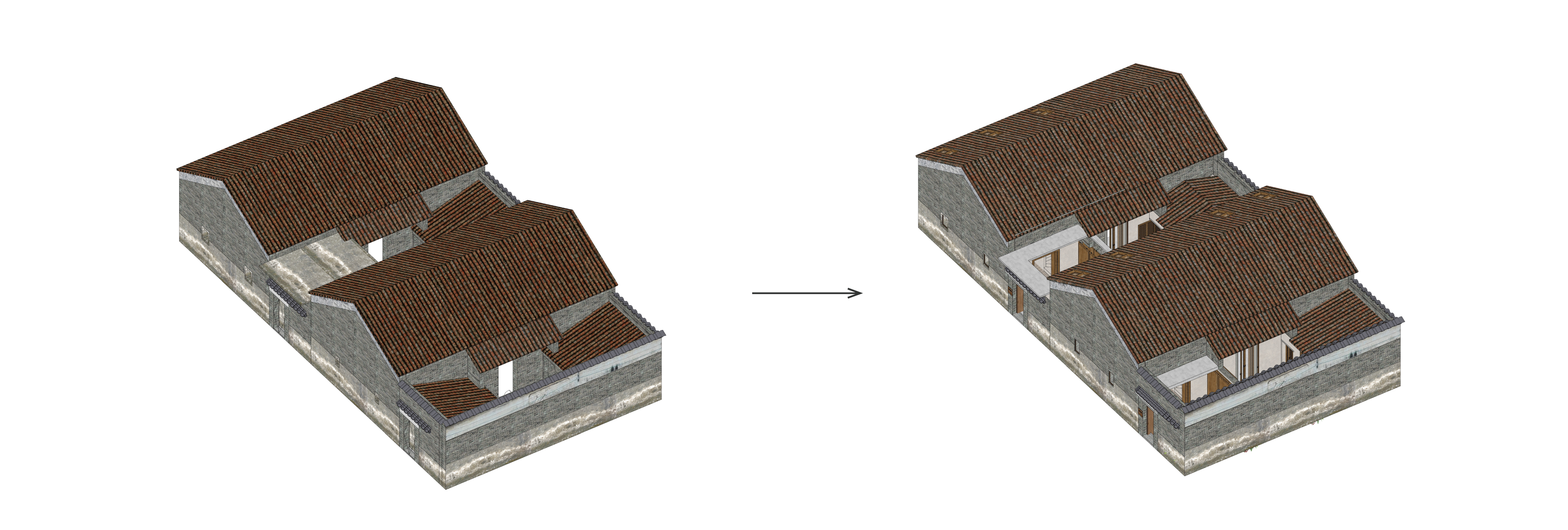






原有的旧屋墙体在时光的洗刷下已变得残败和脆弱,但此时的它们更像是历经时间打磨的艺术品。于是设计师在旧墙的背后撑起了新的混凝土墙,在保证安全性与美观性的同时,也让这岁月的痕迹得以保留。
The original walls of the old houses had become dilapidated and fragile over time, but they now resemble art pieces shaped by the passage of time. To preserve this historical character, we reinforced them with new concrete walls behind the old structures. This approach ensures both safety and aesthetic appeal while maintaining the traces of history.

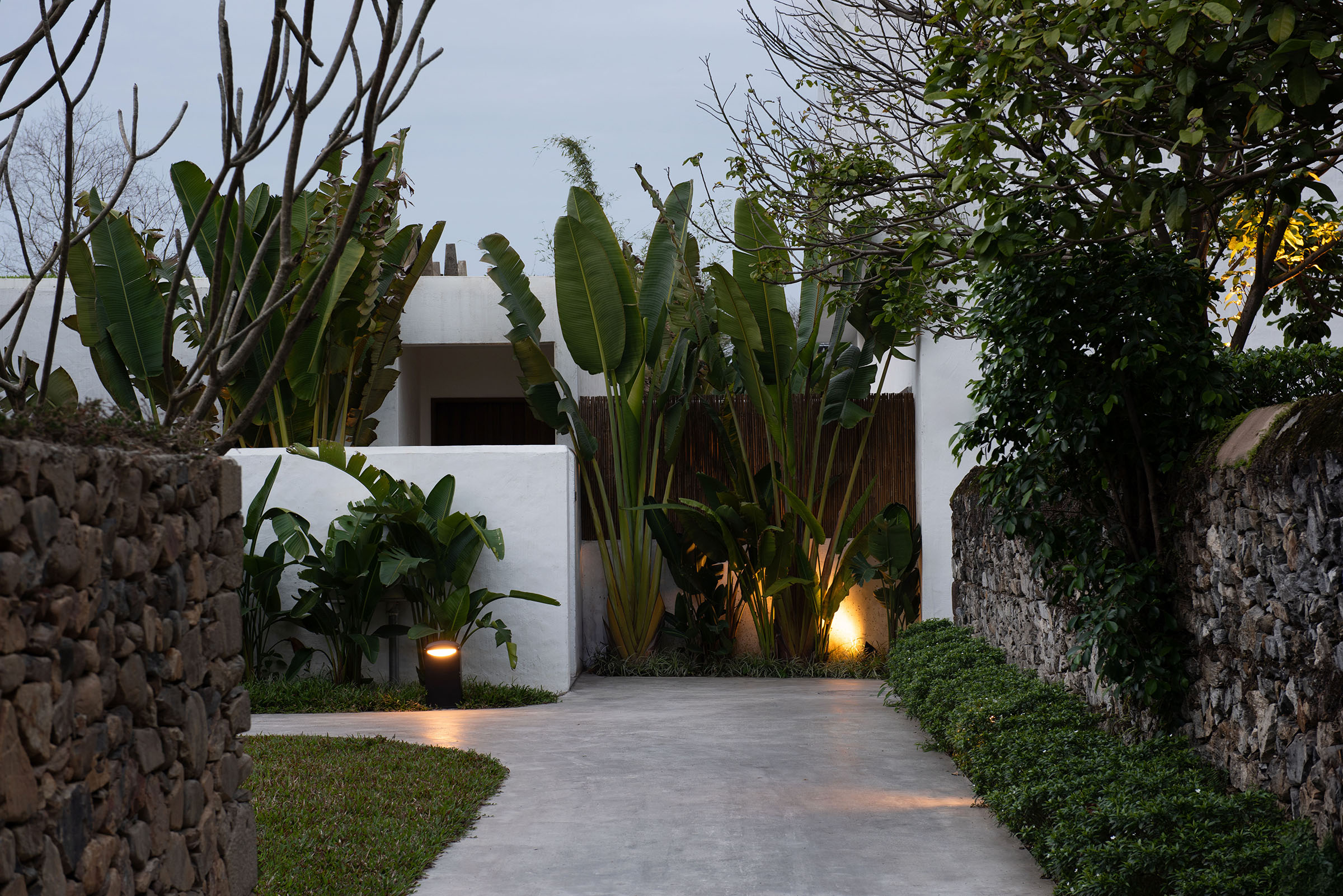
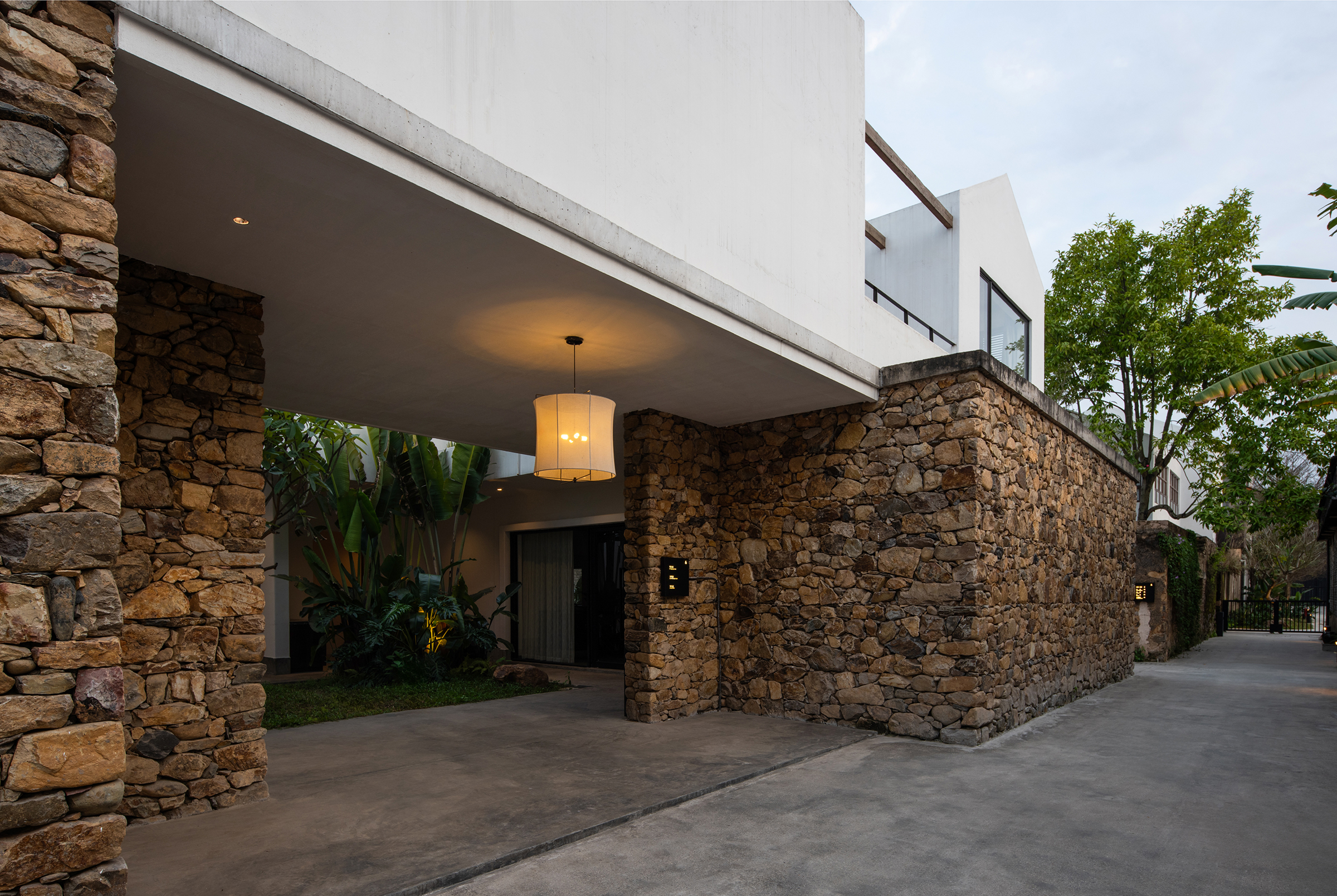
酒店团队将温泉引入了客房,结合旧屋套间的场景,创造了别具一格的温泉体验。
The hotel team has seamlessly integrated hot springs into the guest rooms, creating a distinctive experience that marries the charm of the traditional suites with the luxury of private hot spring access.


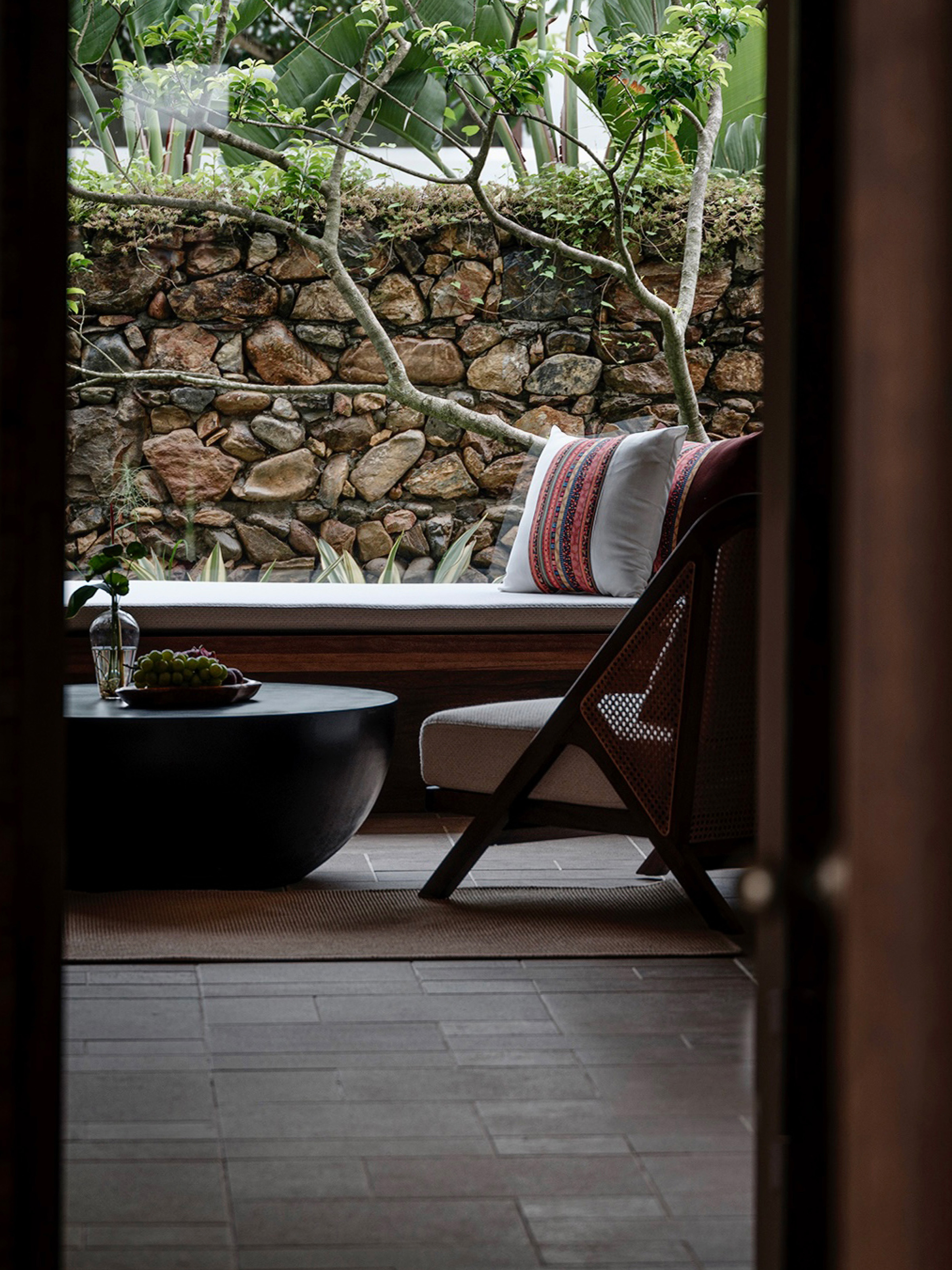
三禾业主别出心裁地将旧村整体改造时费心收集的各家各户的条石回收利用,用在了酒店公共泡池的区域。久经历史打磨已呈现出光滑质感的石头,在温泉水的浸润下呈现出了更具温润质感的灵气。
In a creative touch, the resort owners repurposed stone slabs collected from the village renovation for the hotel's communal hot spring area. Polished smooth by history, these stones take on an even more refined and serene quality when immersed in the hot spring water.




完整项目信息
项目名称:清远三禾·稻里温泉度假酒店
项目类型:改造、规划、建筑、室内、景观
项目地点:广东清远
建成状态:建成
设计时间:2021年4月-2022年4月
建设时间:2021年4月-2023年6月
用地面积:20,352平方米
建筑面积:6,091平方米
设计单位:hia高地设计
设计单位联系方式:contact@hia.today
设计及酒店顾问:高宇
设计总监:庄迪
技术总监:陈丽纯
设计团队:廖石锋、梁丁方、何艺荃
景观:佛山蒂霖景观设计有限公司
照明:伊恩照明
业主:三禾·稻里温泉度假酒店
版权声明:本文由hia高地设计授权发布。欢迎转发,禁止以有方编辑版本转载。
投稿邮箱:media@archiposition.com
上一篇:蓝瓶咖啡首入华南,深圳万象天地店抢先看 / COLLECTIVE
下一篇:万宁日月湾Grom冲浪集合店 / NormalBuild